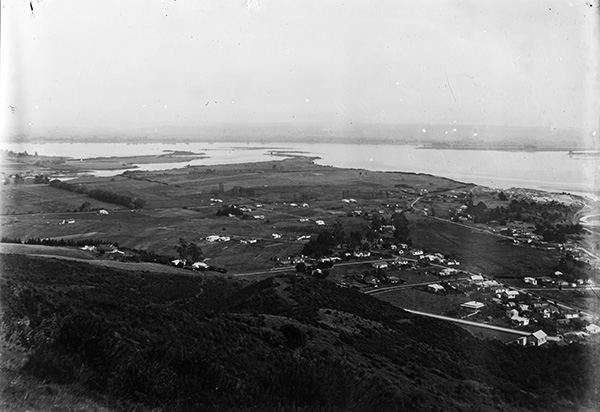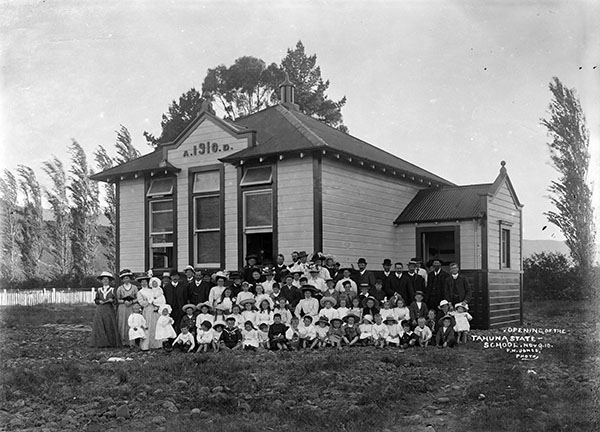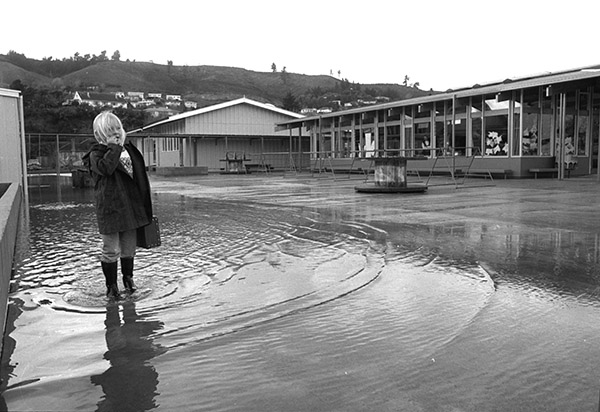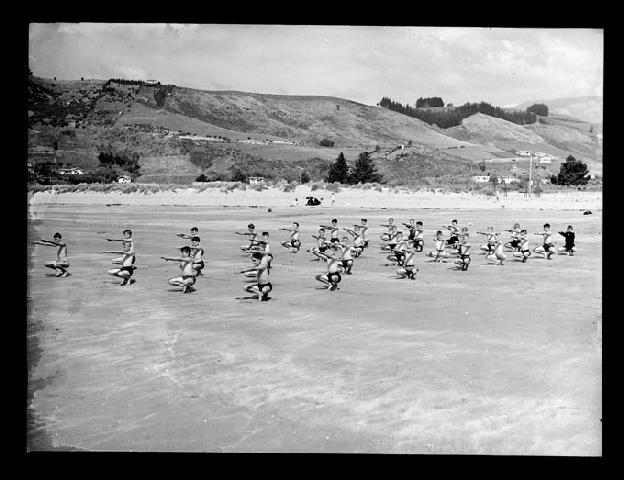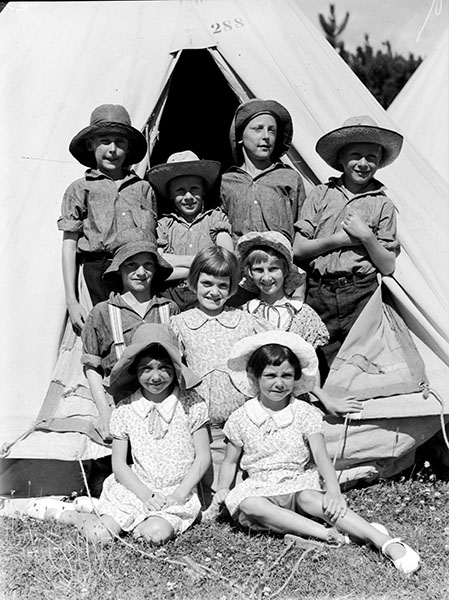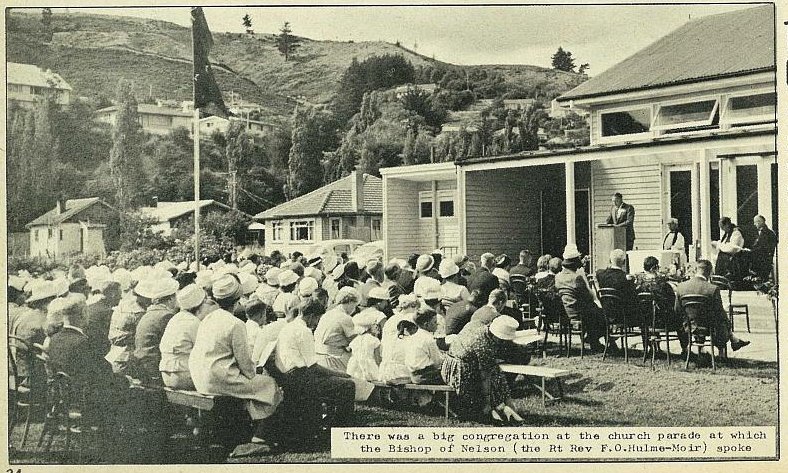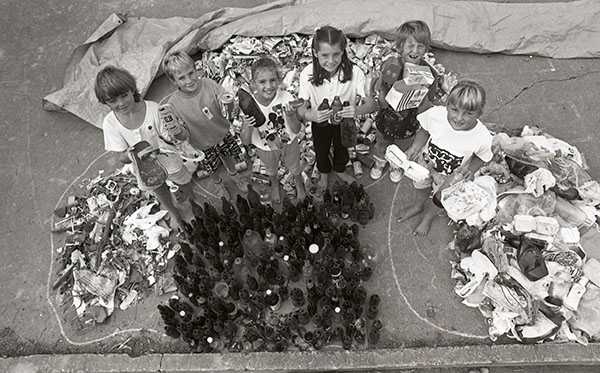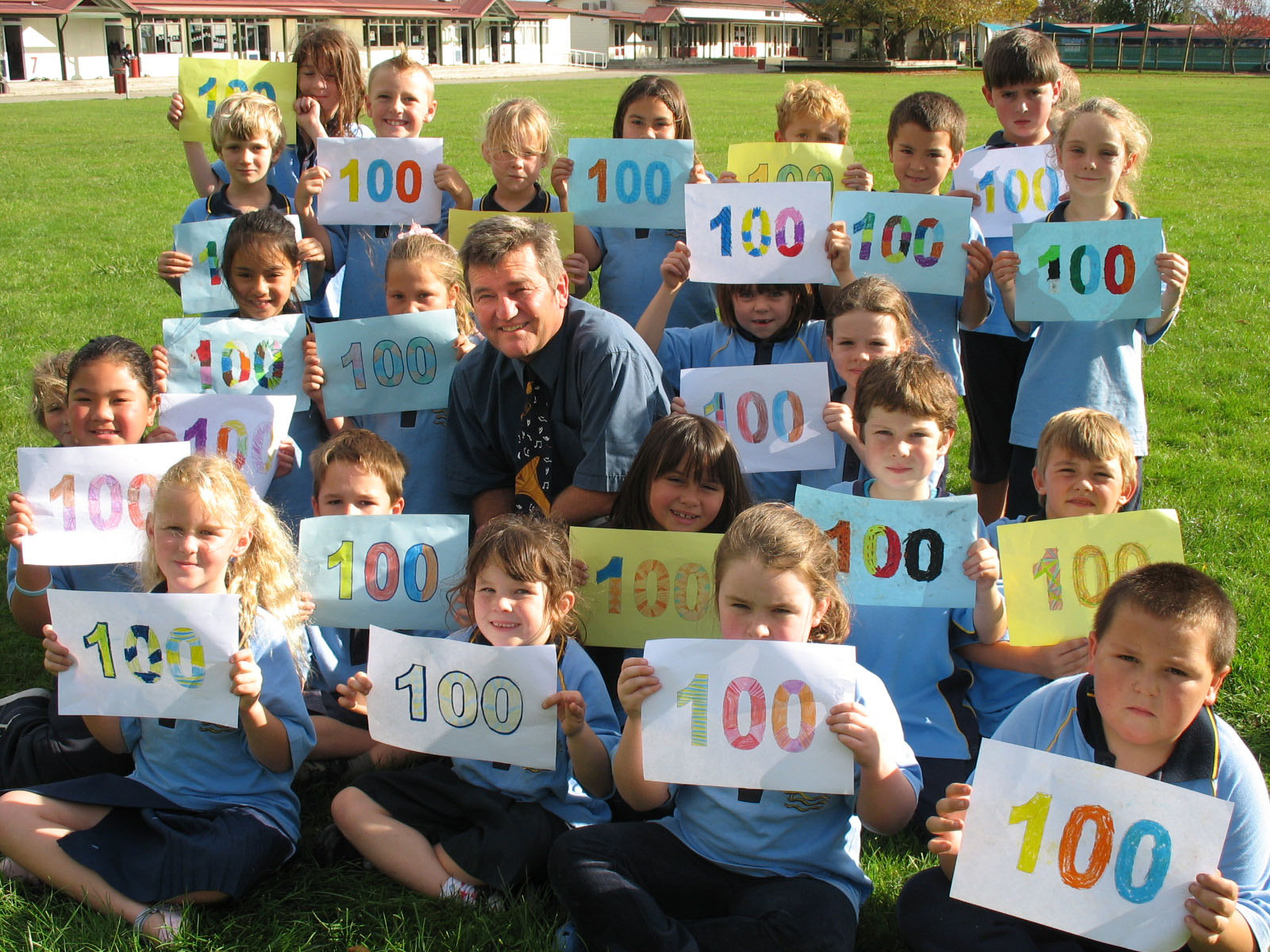Tahunanui - the school by the sands
The story of Tāhunanui School mirrors the rapid development its seaside location and the nearby beach into an established community and popular summer holiday destination. 1 View of Tāhuna from Paddy's knob. Nelson Provincial Museum collection. 320595 It began in a tiny lean-to shed in Muritai Street in 1908.
The story of Tāhunanui School mirrors the rapid development its seaside location and the nearby beach into an established community and popular summer holiday destination.1
It began in a tiny lean-to shed in Muritai Street in 1908. Designated a temporary side school for Stoke School, it initially accommodated 13 junior pupils so they did not have the long walk to and from Stoke each day that the senior pupils made.
Situated in the then sparsely populated area around the beach, the Nelson Education Board never expected the small school, originally called Tatahi School, to become permanent or, for the community it served, to grow much larger than it already was.
But the school quickly became the focal point for its community and its more modern motto “I can, I will” can be seen to reflect the attitude of those early parents and residents who fought for its continued existence and expansion, just as they did for the development of Tāhuna(nui) and its safe swimming beach.
A rapidly rising roll saw the opening of the first purpose built classroom in 19102 on land purchased for the school in Rawhiti Street. This coincided with the Tāhunanui population reaching a large enough mass to call for “a post office, a store, refreshment rooms, a regular coach and a parcel delivery service”.3 By 1920 the population of Tāhuna reached 500, allowing the formation of a town board.
Now known as Tāhuna (and, from 1922, Tāhunanui) the school, with a roll of more than 60, became independent of Stoke School in late 1913. For the next 80 years it grew steadily in roll and size, reflecting the growth in the population of Tāhunanui itself, until reaching its peak of more than 400 pupils in the mid-1990s.
Reminders in the early years that the school was surrounded by farms and rural activities were frequent. Offensive smells from a neighbouring rendering plant saw some parents remove their children from the school and, more than once, animals trespassed onto the school grounds. Goats ate school trees, pigeons fouled the drinking water, and various animals escaped into the grounds from nearby slaughter houses.
The school quickly developed a close relationship with Tāhunanui Beach. In fact a lot of the beach ended up at the school. On a number of occasions tons of sand were moved from the beach and, with “spoil”, gravel, “fill” and earth, spread across the low lying school grounds to build them up and provide better drainage. Unfortunately flooding at the school remained a constant issue for successive school committees and boards of trustees well into the opening years of the 21st century.
The curative values of the seaside saw a children’s health camp established at the school over the summers of 1936-37 and 1937-38.
Before a school pool was built in 1945, aquatic carnivals were held at the beach and classes went swimming there. Pupils were also known to run down to the beach at lunchtimes for a quick swim before afternoon classes. From 1996 the senior school has headed to the beach each year for an annual mid-winter swim.
During World War II the school’s proximity, not only to the beach but also to the Nelson Aerodrome, taken over by the Royal New Zealand Air Force for the war’s duration, required an action plan to ensure the children’s safety in the event of a Japanese attack. Two air raid shelters were built into the front playing field.
In the 1960s the school held fundraising dances at the beach and sold fresh fruit and vegetables from a roadside stall to those staying at the Tāhunanui campground. Pupils were involved in planting trees in beach picnic areas and the Hounsell Circle (where Natureland now is) and from the 1990s collected rubbish from the beach.
The school’s connections with its community were strong. With no hall of its own, the school used the Tāhunanui Town Hall from at least the 1920s for productions, concerts and fundraising dances for many years, and a scout troop established by headmaster R.J. Marston during World War II was connected to the school, as was the Nelson Amateur Roller Skating Club in the 1950s.
By 1944 the population of Tāhunanui had reached 1,000 but it was the post-war baby boom that saw the suburb really grow, resulting in many new school and community amenities, and the construction of holiday accommodation for beach visitors.
The school celebrated a century of education at Tāhunanui in 2008 and remains at the heart of its community. This can be seen in the Muritai Centre, developed in 2003 from a former open plan classroom block into a large multi-purpose building used as a school hall and shared community centre.
2016 (updated 2024)
Story by: Karen Stade
Sources
- Stade, K. (2008) The School by the Sands, A Century of Tahunanui School, Nelson 1908-2008, Nelson: Tāhunanui School
- Progress of Tahuna (1910, November 11) Nelson Evening Mail, p.3.
https://paperspast.natlib.govt.nz/newspapers/NEM19101111.2.9 - Progress of Tahuna
Further Sources
Books
- Dickinson, B.E. (1989) Historic Tahuna [Nelson, N.Z.] : B. Dickinson
http://www. worldcat.org/oclc/154423496 - Stade, K. (2008) The school by the sands. a century of Tahunanui School, Nelson, 1908-2008. [Nelson, N.Z.] : Tāhunanui School
http://www.worldcat.org/oclc/250525973
Websites
- Tāhuna Beach collective holiday memories:
http://collectiveholidaymemories.nz/ - Tāhunanui School:
http://www.tahunanui.school.nz/
